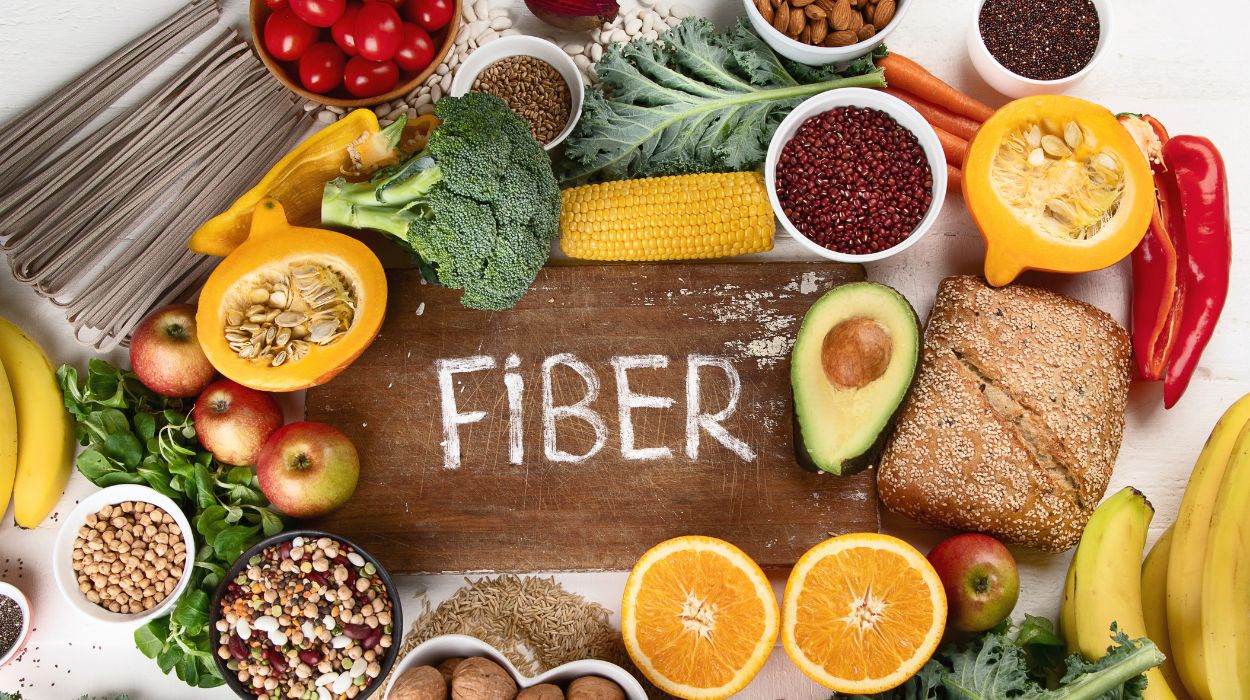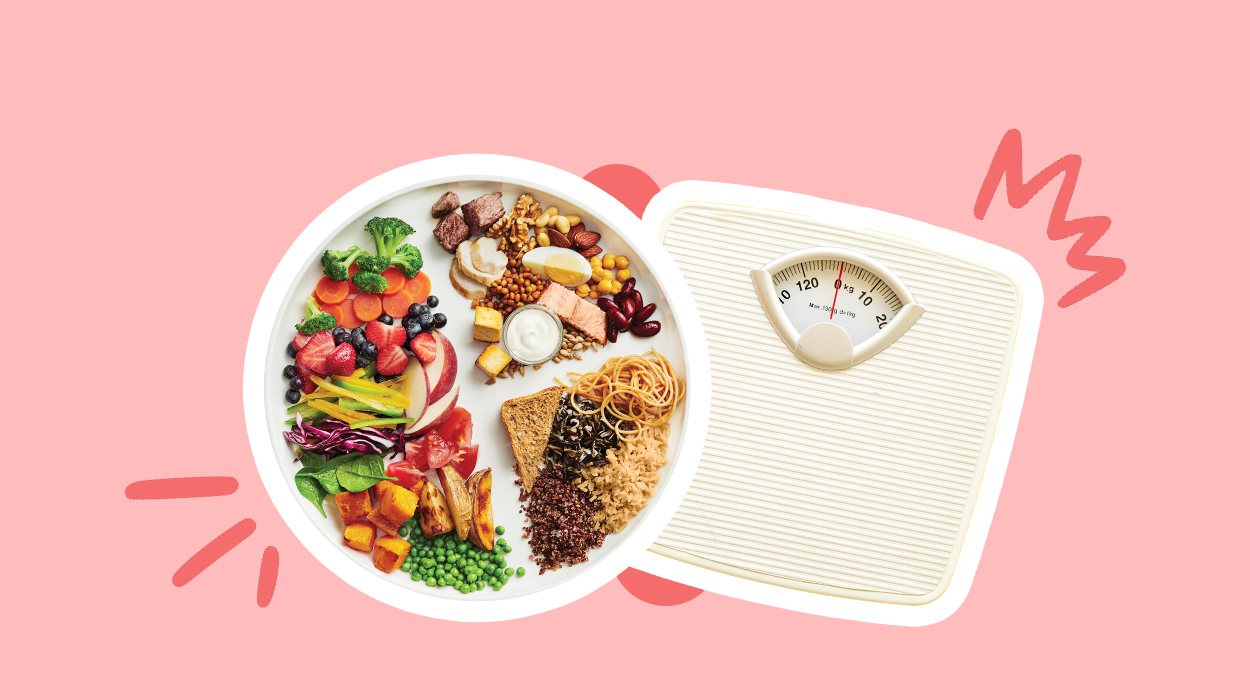If you are on a weight loss journey, you might wonder about options of high-fiber foods for weight loss and how much fiber you need for weight loss. This is an important question that can help boost your weight loss and improve your overall health.
Fiber is a type of indigestible carbohydrate that is found in many plant-based foods. It works as a natural appetite suppressant,[1] making you feel fuller for longer and reducing your calorie intake. Alternatively, it may also support losing weight by altering metabolism and increasing the amount of calories excreted in stool.
But that’s not the only benefit of eating fiber-rich foods. Research[2] has shown that high-fiber foods can help improve bowel movement consistency, lower cholesterol levels, and improve digestive health.
This article will explore the best high-fiber foods for weight loss. We’ll also explore how dietary fiber intake supports weight loss and provide tips on incorporating these foods into your diet.
Best High Fiber Foods For Weight Loss
Many high-fiber healthy foods, such as vegetables, fruits, and protein sources, can promote weight loss. The top five high-fiber foods for weight loss include:
- Asparagus.
- Berries.
- Beans.
- Seeds.
- Broccoli.
Try adding these foods to your diet to boost fiber, improve digestion, regulate blood sugar, and increase feelings of fullness.
High-Fiber Foods For Weight Loss

Adding high-fiber foods to your diet is exciting if you are curious about how to lose weight.
Many health foods are high in fiber, including grains, vegetables, fruits, and high-protein foods. This high-fiber food chart[3] for weight loss can help get you started. Rather than taking a fiber supplement, incorporating these naturally high-fiber foods can support your specific dietary needs without breaking the bank.
We will discuss five high-fiber foods for weight loss and suggest easy ways to add these foods to your diet.
Asparagus
So, what are high-fiber foods for weight loss? Vegetables are a great source of fiber, and asparagus is at the top of our list.
Asparagus[4] is a powerful, low-calorie vegetable that supports weight loss, keeps calorie consumption low, and improves digestion.
It is rich in insoluble fiber, containing two grams per serving, which adds bulk to stool and supports regular bowel movements. The high fiber[5] content in asparagus can help with improving bowel movements and digestive complaints like farting, bloating, and diarrhea. Drinking water with high-fiber foods is vital to promote softening of stools and proper digestion.
Asparagus is high in polyphenols, which have anti-obesity effects,[6] potentially inhibiting fat cell production, reducing inflammation, and increasing metabolism. Eating foods high in polyphenols can support weight loss.
Asparagus is also packed with antioxidants, which limit damage from free radicals and encourage their breakdown. Free radicals[7] contribute to countless chronic diseases, such as heart disease.
Berries
Berries are high-fiber fresh fruits rich in soluble fibers that serve as prebiotics. Prebiotics act as a nutritional source for the good bacteria in the gut, which can promote weight loss.
Research[8] has demonstrated that a balanced gut microbiome, or the amount of good and bad gut bacteria in the digestive tract, can support weight loss. Like asparagus, berries can also help normalize bowel movements, reducing gas, bloating, and constipation.
The best berries to add to your diet include blueberries, strawberries, and raspberries. Strawberries[9] have 2 g of fiber per serving, blueberries[10] have close to 2.5 g of fiber per serving, and raw raspberries[11] have the highest fiber content with 6.5 g per serving.
Adding these fiber-rich foods to your diet can be as easy as sprinkling some berries on your oatmeal, low-fat yogurt, or salad and will support weight loss and improve digestion. Fresh berries can also be infused into detox water for a low-calorie beverage. Also, if you love smoothies, toss in a handful of berries for a great flavor that increases total fiber consumption.
Beans
Beans,[12] in general, are an excellent source of fiber for individuals looking to lose weight. Served as a side with brown rice or lean meats, they are a filling source of protein and soluble fiber.
Black beans[13] are one great option for dietary fiber, packed with approximately nine grams per serving. They are a perfect substitute for meat in your meals if you are vegan or vegetarian. Black beans are particularly easy to add to various low-calorie dishes such as salads, tacos, soups, and veggie burgers.
Lima beans[14] are also chock full of fiber, containing an impressive 7 g per serving. Although maybe not as popular as the well-known black bean, lima beans make an excellent addition to a weight loss diet rich in low-calorie soups.
If you enjoy soups, split peas[15] are another tremendous high-fiber option. Containing 8 g of fiber per serving, split peas can make a delicious hearty soup. Add some olive oil to split pea soup for a serving of healthy fats to support healthy eating.
Seeds
Many seeds are a great addition to a healthy diet to help lower body weight and help you get enough fiber.
Chia seeds[16] are tiny powerhouses of nutrition, packed with 34 grams of fiber per serving, the daily recommended amount. These seeds should be at the top of your list for fiber-rich foods.
Chia seeds can support a healthy weight by being quickly added to salads, baked goods, smoothies, puddings, or jams. This high-fiber food also goes great in overnight oats, adding a unique texture to your morning routine.
If you’re in the mood for a fall snack, pumpkin seeds[17] are high in fiber and rich in protein and iron. These seeds add a wonderful crunch to your meal. They can be sprinkled on sweet potatoes for a healthy, fiber-rich meal.
Sunflower seeds[18] also have a high fiber content. These versatile seeds go great with many delicious, healthy recipes. Breads, muffins, granola, and nut bars are a great way to add sunflower seeds to your diet.
Broccoli
Broccoli[19] is one of the best cruciferous vegetables for weight loss. This vegetable has over two and a half grams of fiber and is very low-calorie, making it a great addition to a healthy diet.
Additionally, research[20] shows that the flavonoids in broccoli may prevent cardiovascular diseases. Consider adding broccoli to your diet to improve overall health and increase fiber intake.
Broccoli can be prepared as a side dish with your favorite meals. Consider these foods to avoid to lose weight, such as fried or processed foods like french fries, for broccoli, to promote weight loss.
How Fiber Helps In Weight Loss

Adding fiber into your diet has been proven to provide many benefits when it comes to weight loss, especially when combined with a low-calorie diet.
Increasing Feelings Of Fullness
Foods high in fiber tend to be more filling. Multiple mechanisms have been proposed regarding how fiber increases feelings of fullness, such as increasing chewing time, increasing the distention of the stomach, and boosting nerve signals from the stomach to the brain of fullness.
Research[2] has shown that when foods are more filling, they help curb appetite and lower calorie consumption throughout the day. In the long term, this can result in healthy and steady reductions in weight.
Balancing The Gut Flora
Incorporating high-fiber foods for weight loss can also help balance the gut bacteria. Research[21] has demonstrated that one of the potential mechanisms underlying obesity is an imbalance of the good and bad bacteria in the digestive tract.
High-fiber foods like oat bran, root vegetables, and air-popped popcorn contain large quantities of prebiotics.[22] Prebiotics are the valuable nutrients that feed the good bacteria which live in the gut.
Improve Gut Motility
Fiber has also been proven to affect gut motility, or food movement, throughout the digestive system.
Ingesting foods high in fiber can increase gut motility, promote normalization of bowel movements, and improve constipation. Constipation[23] may cause underlying inflammation, making it harder for the body to detox properly.
Adding in regular exercise, such as cardio workouts, can also help promote gut motility. Combining these two activities into your daily routine can promote regular bowel movements, leading to proper digestion, which may support healthy weight loss.
Balance Blood Sugar Levels
Incorporating high-fiber foods into the diet has also been shown to help stabilize blood sugar levels. Fiber consumption slows down glucose absorption from the foods you eat, which can prevent rapid fluctuations in blood sugar levels. These rapid fluctuations in blood sugar can cause individuals to reach for sugar snacks between meals to regulate their blood sugar levels.
By incorporating high-fiber foods, blood sugar levels may become more balanced, and this can prevent snacking that leads to unintended weight gain.
How Much Fiber Should I Eat?
The recommended daily fiber intake varies depending on your sex, age, and overall health, contributing to your recommended daily calorie consumption.
According to the United States Department of Agriculture[24] an individual should consume 14 grams of fiber per 1,000 calories of food. So consuming 2,000 calories a day would equate to 28 grams of fiber daily, whereas a higher caloric intake of 2,500 calories would recommend 35 grams daily.
Fiber intake recommendations may also vary based on your medical history, age, dietary restrictions, or physical limitations, so always check with your doctor or nutritionist before making any dietary changes.
Additionally, adding high-fiber foods for weight loss should be done gradually so your body can adjust to the digestive changes. Drastic increases in fiber intake may cause gastrointestinal discomfort,[25] such as bloating or cramps. This is why it is crucial to consult a knowledgeable healthcare provider who can best direct you to incorporate small portions of high-fiber foods into your diet.
Who Should Avoid High-Fiber Foods
Although high-fiber foods are generally beneficial for most individuals, there are some cases where high-fiber foods can worsen or exacerbate symptoms.
Traditionally, individuals with inflammatory bowel diseases, such as ulcerative colitis or Crohn’s disease, have been told to avoid fiber as it can cause an inflammatory reaction. Recently, there has been some conflicting research[26] that has demonstrated that certain forms of fiber might be beneficial for some people with inflammatory bowel disease.
Additionally, individuals who have had certain gastrointestinal surgeries may not be able to tolerate fiber. If you have any underlying medical conditions or surgical history, it is always best to consult a healthcare professional before changing your fiber consumption.
Conclusion
Adding high-fiber foods to your diet can be an invaluable tool to promote weight loss by balancing the gut flora, improving gut motility, keeping you full longer, and regulating blood sugar levels.
There are many options, but some of the best high-fiber foods for weight loss include asparagus, beans, berries, seeds, and broccoli. Incorporating these high-fiber foods can provide the essential nutrients that make it easier to stick to a low-calorie diet.
When starting a high-fiber diet, remember to gradually increase your fiber intake and speak to a healthcare professional about these dietary changes to ensure they are safe.
By making small, healthy changes to your diet, you can steadily work towards weight loss that is attainable and maintainable, all while incorporating filling, delicious foods into your daily routine.
Frequently Asked Questions
Yes! Incorporating high-fiber foods into your diet can help with weight loss by helping you feel full longer, reducing overall calorie intake, regulating blood sugar levels, and improving gut flora. The results are best when combined with a low-calorie diet.
Eating 25 g of fiber daily is close to the recommended daily intake for women. Increasing fiber intake can improve digestion and bowel movement regularity, control blood sugar, and increase feelings of fullness.
Overeating fiber can lead to gastrointestinal discomfort, which may interfere with the proper absorption of nutrients from your foods. This is why it is essential to consume fiber in moderation and stick with the recommended amount.
Fiber adds bulk to the stool, which causes more water to move into the intestines, softening the stool. Softer stools are much easier to pass, improving constipation. Eating too much fiber can cause bloating, gas, and diarrhea.
Rice is not considered a high-fiber food. Some variations of rice, such as brown rice, are higher in fiber than white rice, making it a better choice if you try to eat a high-fiber diet.
High-fiber foods include root vegetables like sweet potatoes and raw carrots, pumpkin seeds, asparagus, black beans, lima beans, broccoli, and more. If you are unsure, check out[3] this high-fiber food chart for weight loss to give you more inspiration.


